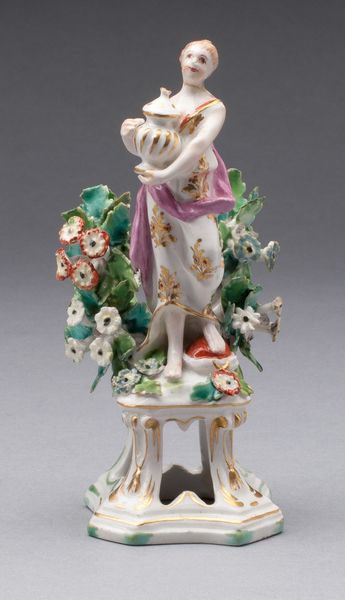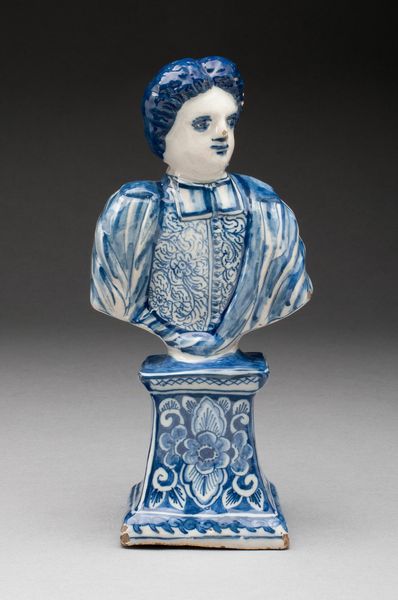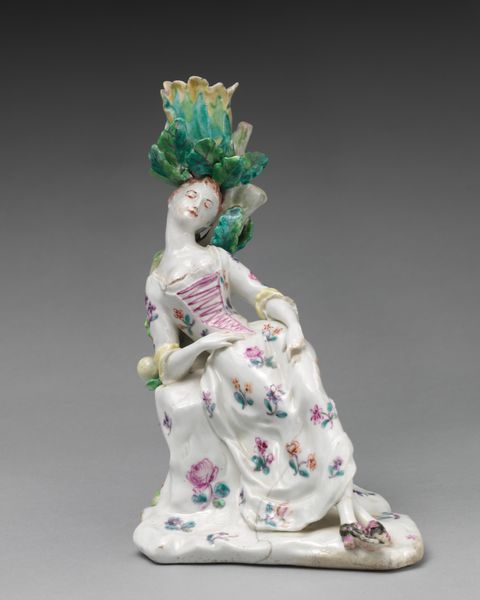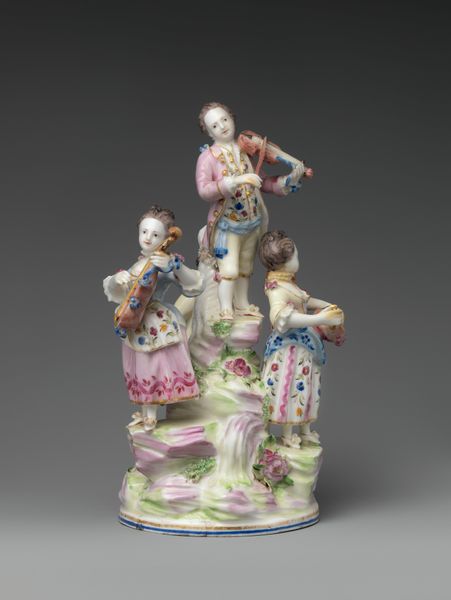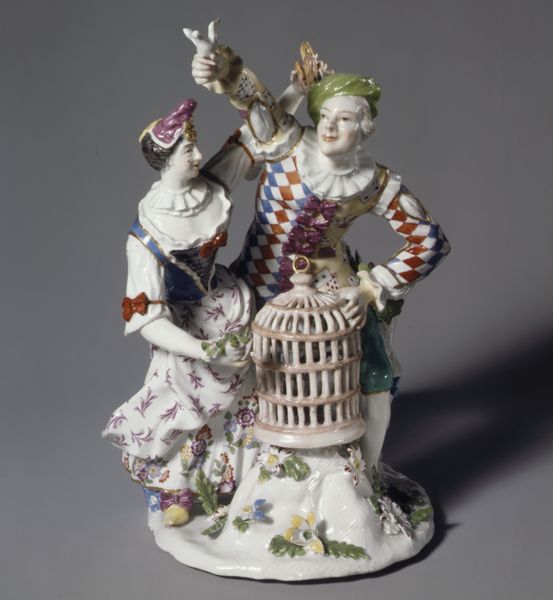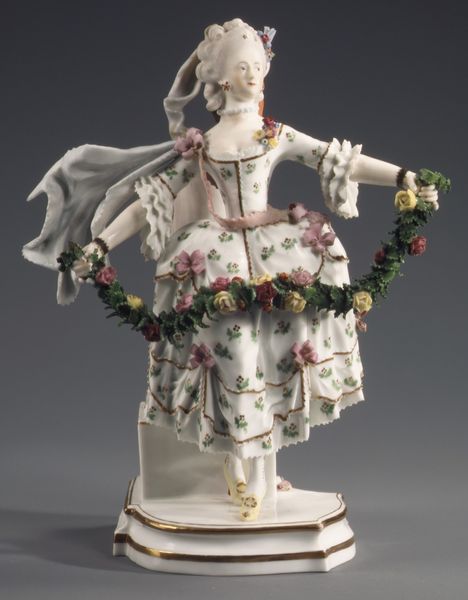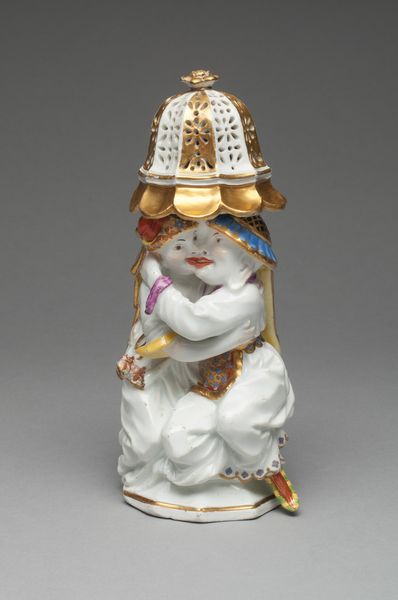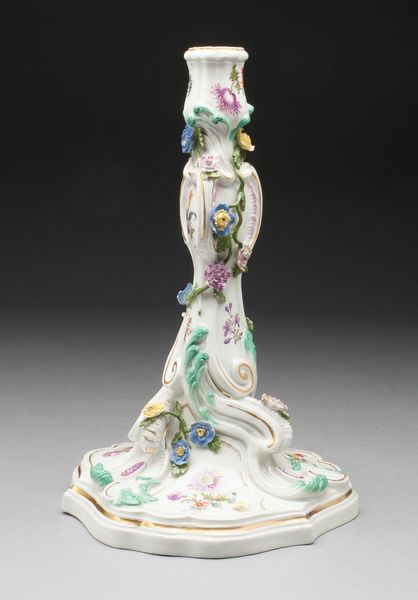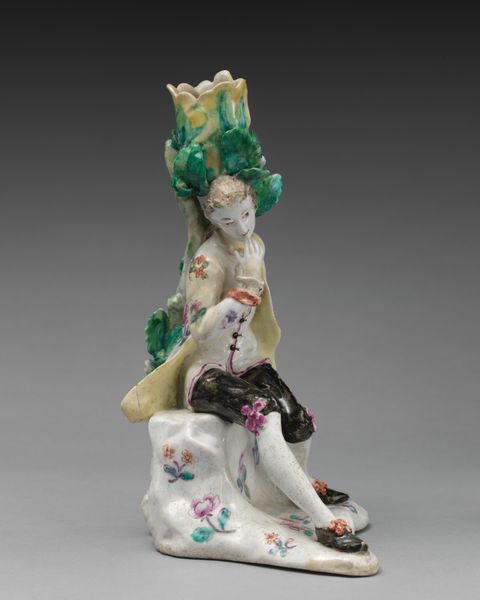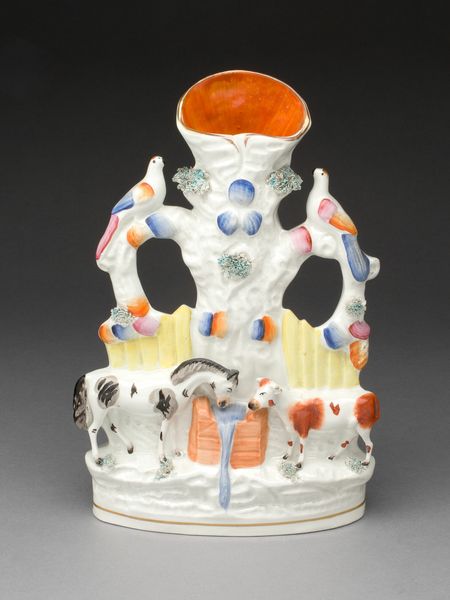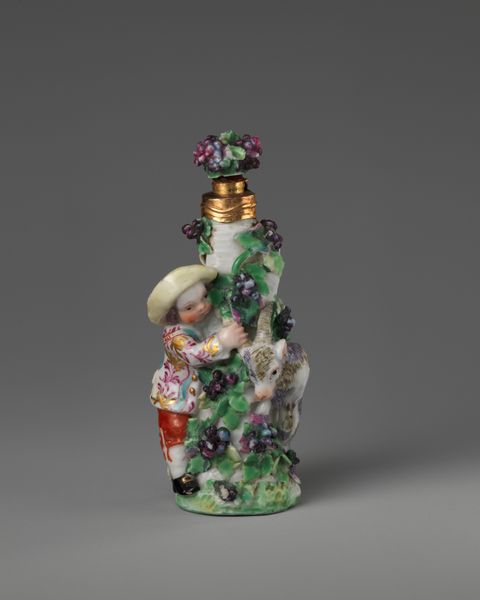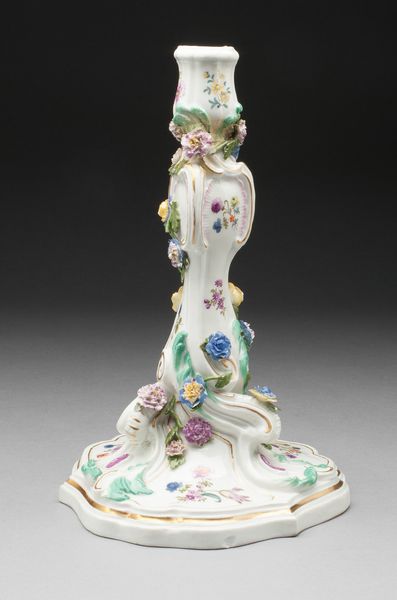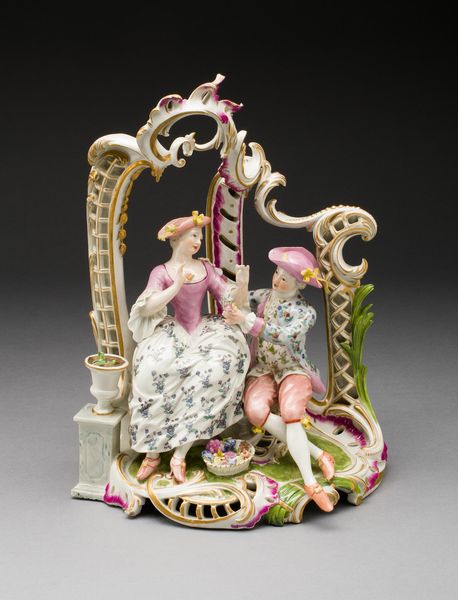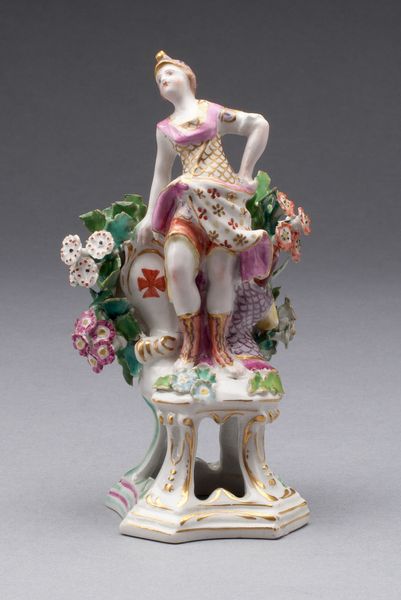
ceramic, earthenware
#
ceramic
#
figuration
#
earthenware
#
stoneware
#
folk-art
#
ceramic
#
nostalgic styling
#
decorative-art
Dimensions: 15.1 × 5.2 × 22.2 cm (5 5/16 × 2 1/16 × 8 3/4 in.)
Copyright: Public Domain
Curator: Before us is an intriguing piece of decorative art titled "Chimney Ornament," crafted around 1830 by the Staffordshire Potteries. It’s earthenware with a stoneware finish. What’s your initial take on it? Editor: Well, it’s wonderfully whimsical! The bright white, contrasted by the little touches of color… It evokes such a strong sense of idyllic nostalgia, doesn't it? It almost feels like a child’s vision of a perfect home. Curator: Indeed. Beyond its surface appeal, consider how such ornaments reflected shifting social aspirations of the emerging middle class in 19th-century England. Owning these objects indicated a family's participation in a consumer culture previously reserved for the elite. This “Chimney Ornament” can be understood within broader narratives of class mobility. Editor: That's fascinating! And thinking iconographically, watermills represent prosperity, sustenance and productivity—this imagery has been used in different contexts throughout history and still conjures associations to hard work but also simpler, more nature-centric living. The little dog up there also denotes domesticity. What about the Swan? Is this just a sign of serenity, or something more? Curator: Possibly more! The swan appears regularly in myth as transformation or purity. However, here its domestic tranquility in this miniature, ornamented water scene reads perhaps simpler. Yet its idealized representation points to wider anxieties about rapid urbanization and yearning for a connection with the rural past, it seems like Staffordshire was banking on nostalgia. Editor: It's ingenious how the piece plays into all of those cultural anxieties. The application of folk-art aesthetics turns potentially complex statements into simple motifs that resonated across classes. Curator: Precisely. The cottage style and decoration aren’t accidental –they are representative of folk culture. It's an ideal that perpetuates notions of sentimental charm. Editor: Examining objects like this shows how deeply embedded social ideas are within our cultural visual vocabulary. Every symbol has its past that shapes perception. Curator: This "Chimney Ornament," therefore, serves as both a reflection and subtle shaper of desires, class aspirations, and historical anxieties that resonate to this day. Editor: I never expected to find such rich meanings inside of a tiny little watermill cottage. It’s fascinating!
Comments
No comments
Be the first to comment and join the conversation on the ultimate creative platform.
